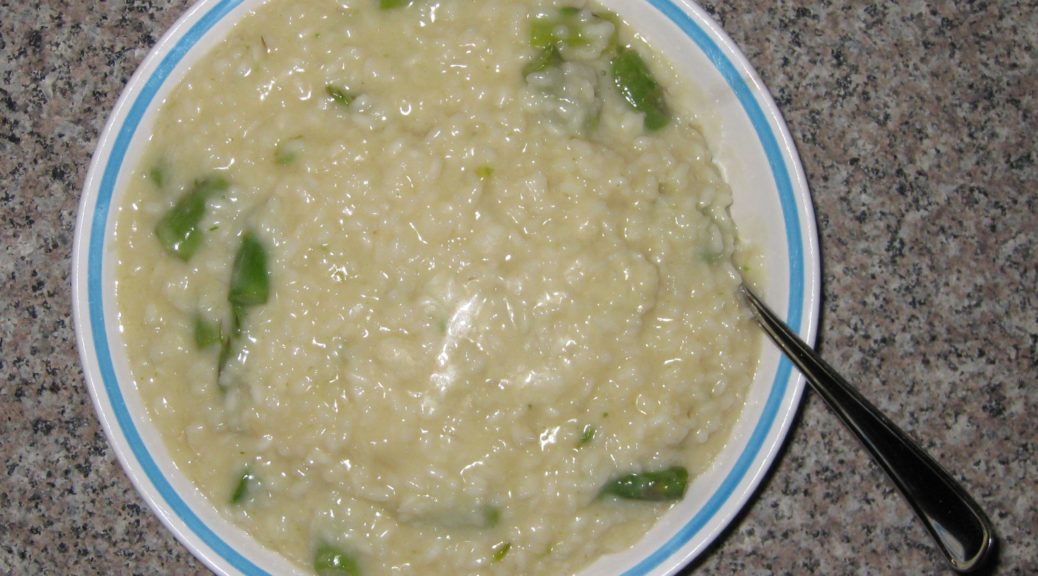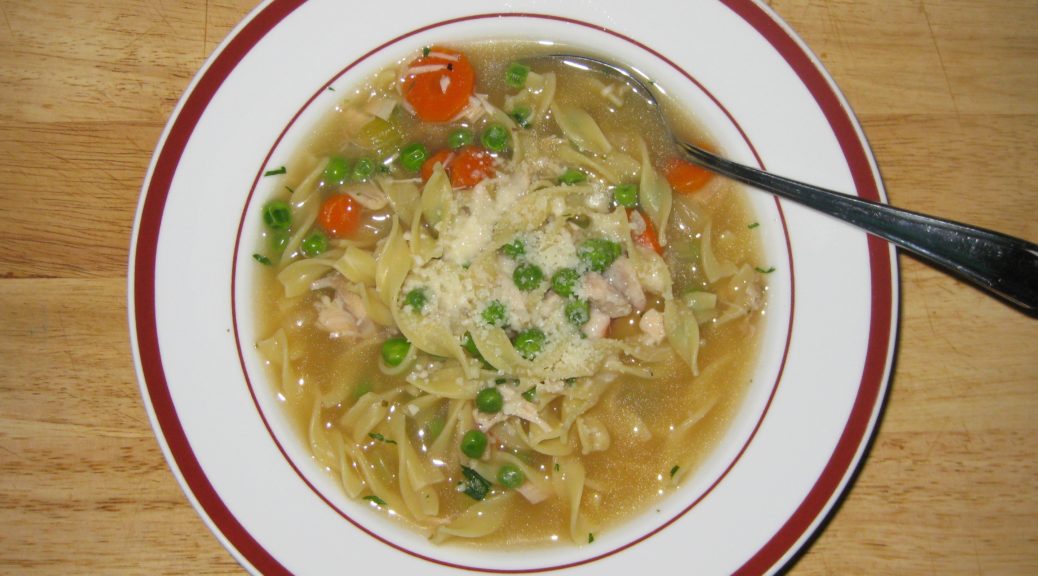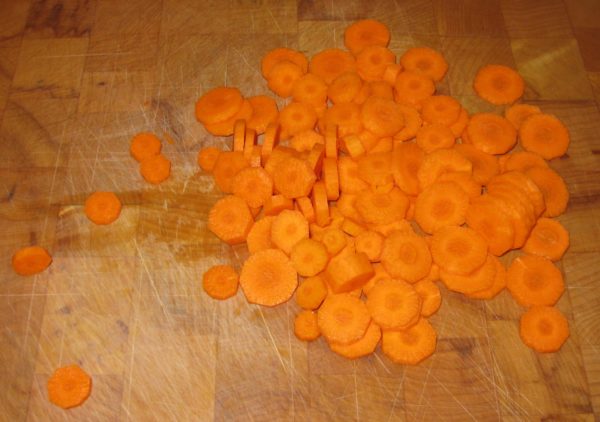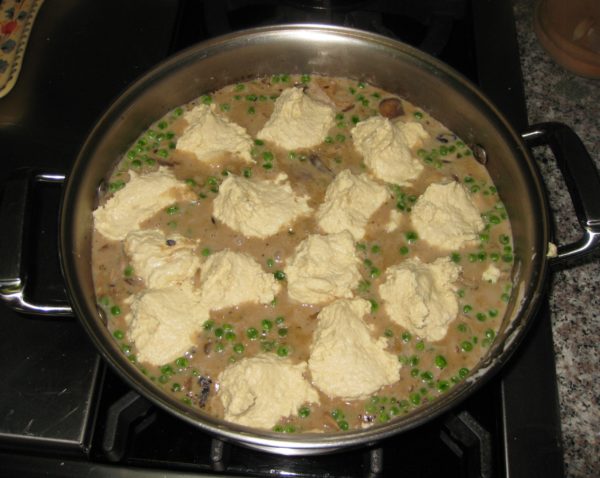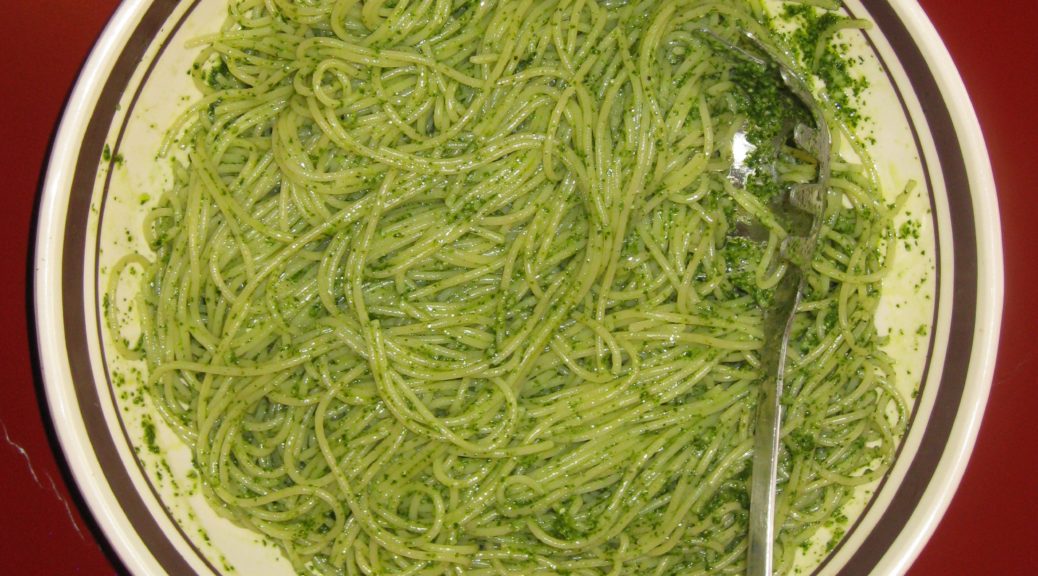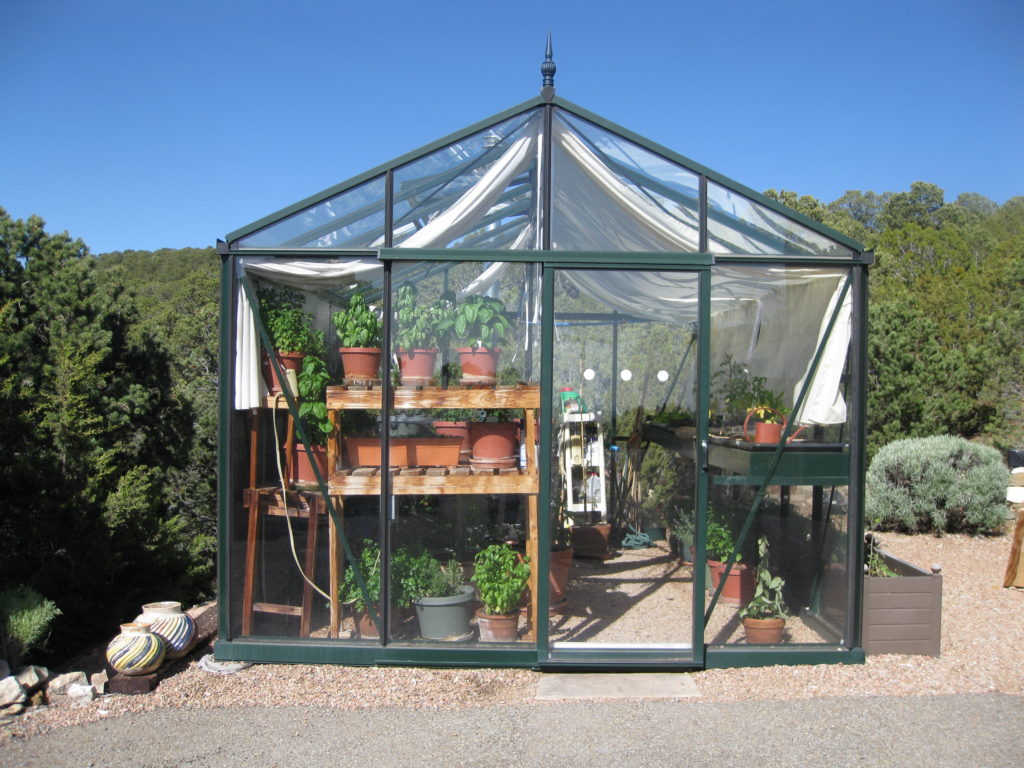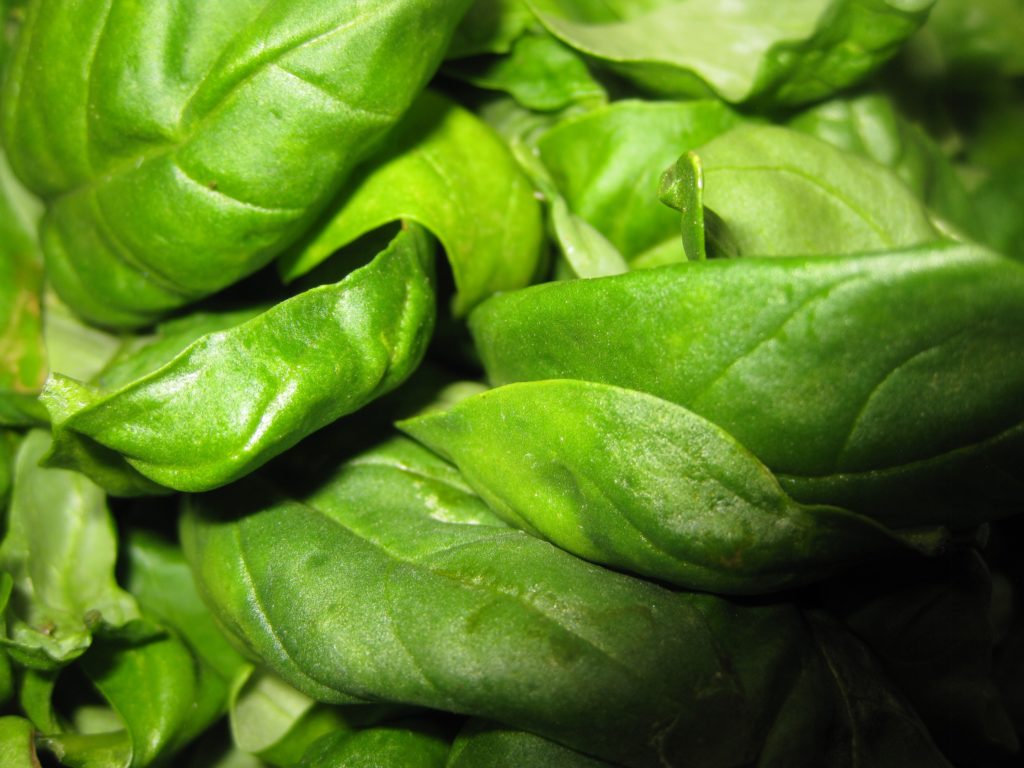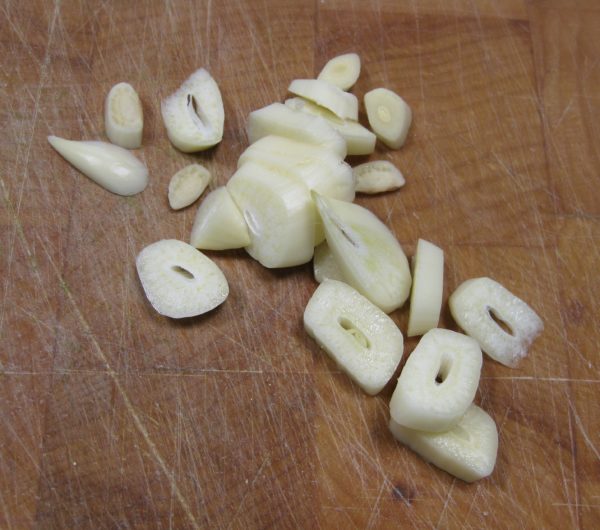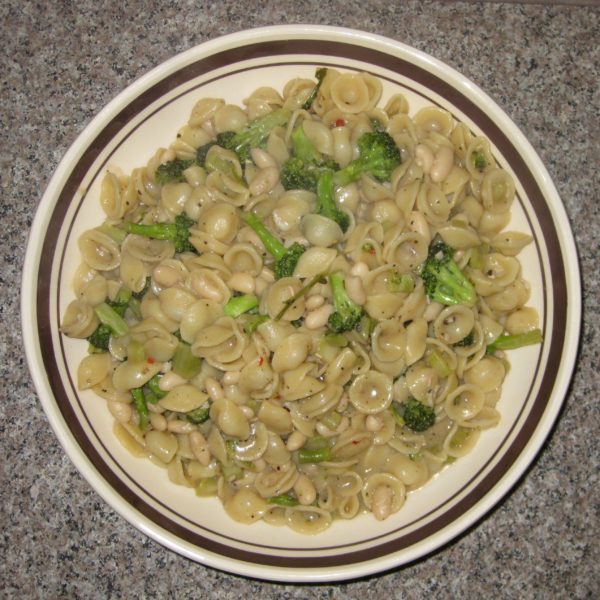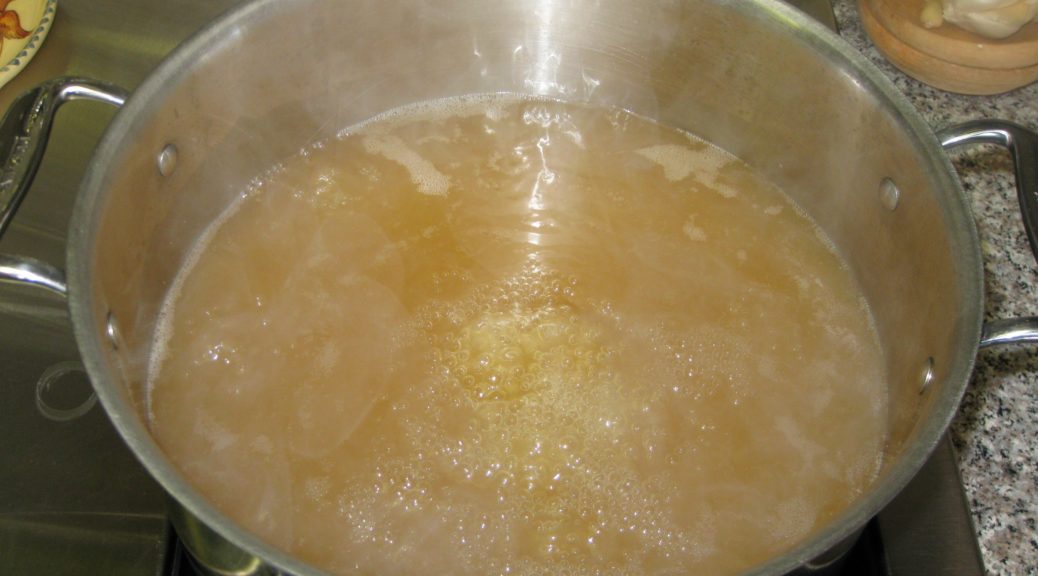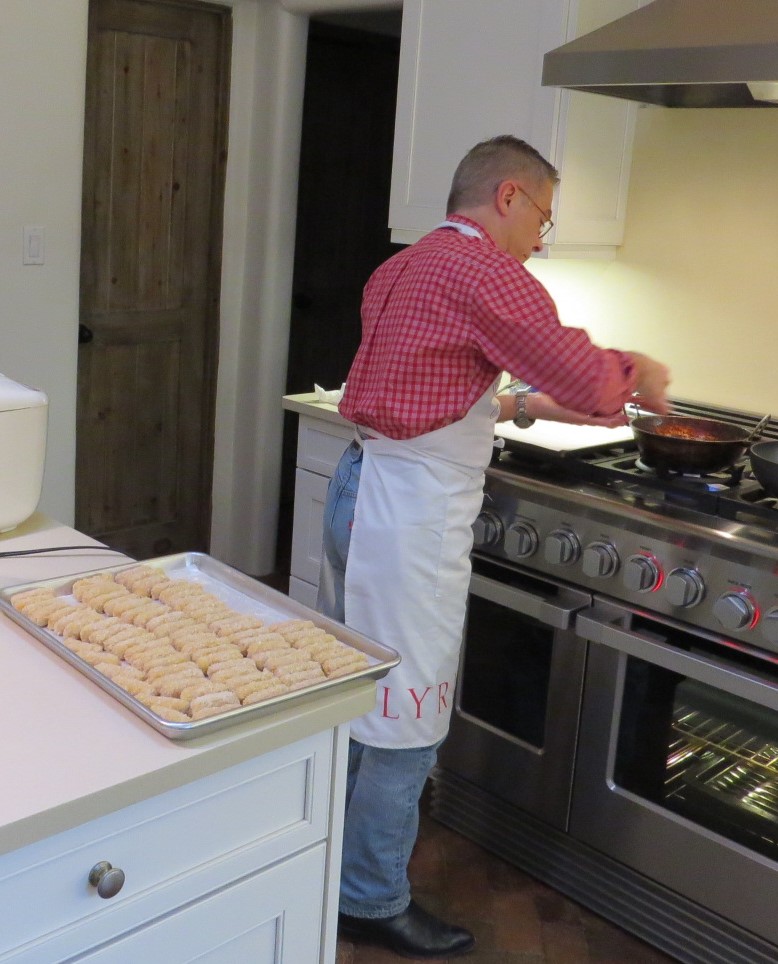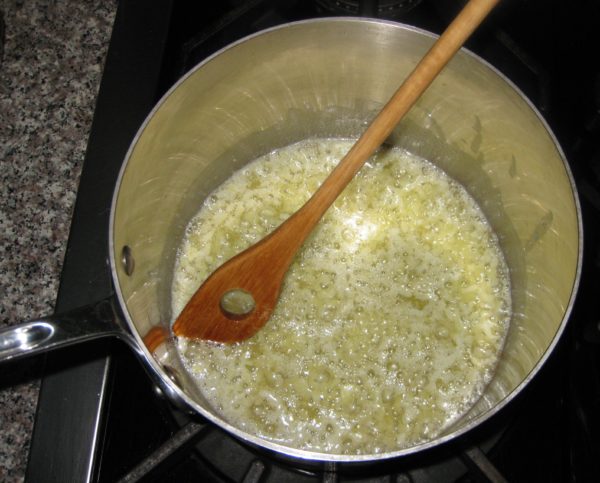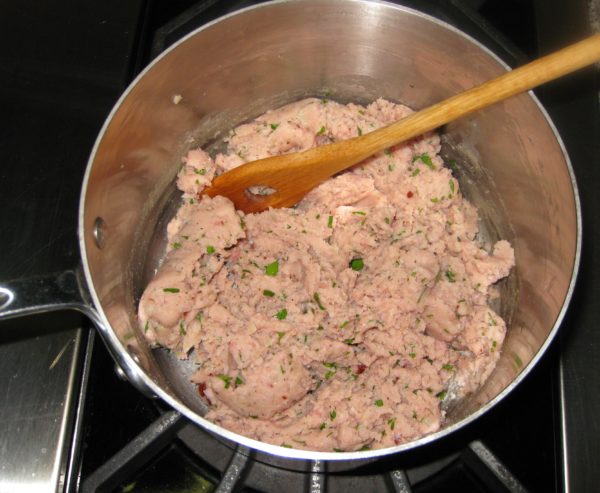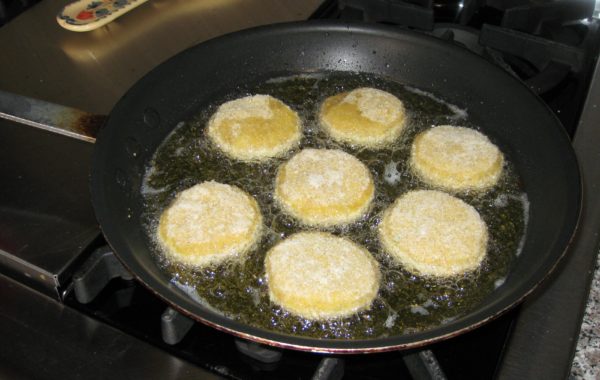May 29, 2017
Risotto is not a Southern Italian dish. Neither is polenta, for that matter.
I never had either until college when I started cooking from Marcella Hazan’s The Classic Italian Cookbook published in 1973. I still use the dog-eared copy I bought in college the year it was published.

It was a magnificent introduction to Northern Italian cooking which I knew little about as a kid of 18 from a small town in Western Pennsylvania in my sophomore year of college.
My knowledge of Northern Italian cooking expanded rapidly though. Marcella was only the beginning. There was a true restaurant renaissance in Philadelphia in the 1970’s. Not only magnificent French restaurants like Le Bec Fin and La Panetiere, but wonderful Northern Italian restaurants like the Monte Carlo Living Room and a bevy of others whose names I can’t recall. I ate at all of them…often. I still remember one dinner at the Monte Carlo Living Room where, after being served a very simple spaghetti with garlic and oil, the waiter (they weren’t called servers back then) came by with a black truffle and shaved large quantities of it onto my pasta. Heaven!
I also learned about Northern Italian cooking from the aunts of my college advisor Eugene (Gene) d’Aquili. Well, it was Roman cooking, actually, which is in central Italy but still pretty far north from where my mother’s family hailed.
Auntie Helen (Zia Elena) and Auntie Louise (Zia Luigia) (they Anglicized their names after coming to America) were born in Rome in the early years of the 20th century. They came to America as children. Of the two, Auntie Helen was the cook. From her I learned to make many classic Roman dishes. Some of Auntie Helen’s dishes are slated to make it into the blog, including a Roman Chicken Cacciatore flavored with anchovies.
So, by the time I got absorbed into my husband’s Northern Italian family (his father is from Tuscany and his mother from Friuli) I had a good grasp of Northern Italian cooking.
We have risotto often. Probably at least once every two weeks. It’s usually made with a vegetable, though occasionally I’ll make Risotto alla Milanese flavored with saffron and not a vegetable in sight. In the spring risotto usually includes asparagus or peas. In the summer it is likely to be zucchini. The fall brings butternut squash risotto and mushroom risotto. Mushroom risotto pretty much carries us through the winter, too, with the occasional risotto made with meat sauce.
Since it’s spring, I’m doing risotto agli asparagi, risotto with asparagus.
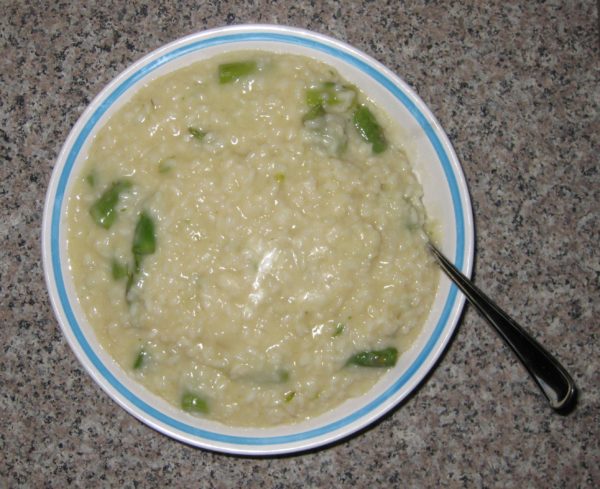
| Prep Time | 15 minutes |
| Cook Time | 45 minutes |
| Servings |
people
|
- 1 pound asparagus
- 1/2 cup finely diced shallot
- 1/4 cup extra virgin olive oil
- 1 1/2 cups risotto rice
- 2/3 cup dry white wine
- 4 cups chicken broth
- 3 tablespoons butter at room temperature
- 1/2 cup finely grated Parmigiano Reggiano cheese
- water as needed
- salt to taste
- black pepper freshly ground, to taste
Ingredients
|

|
- Trim off the tough bottom of the asparagus spears. The standard way to do this is to bend the spear and let it crack naturally where the spear is less tough and woody.


- Finely dice the shallot.


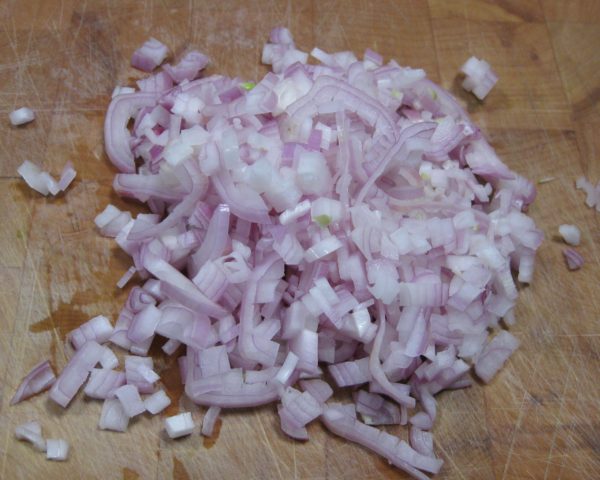
- Cut the tips off each spear, approximately the top 2 inches. Reserve the asparagus tips.

- Cut the remaining spears into 1 inch pieces. Reserve the cut spears separately from the tips.

- Bring the chicken broth to a boil.
- Cook the asparagus tips in chicken broth for 2-4 minutes. They should be “toothy” but not crunchy.
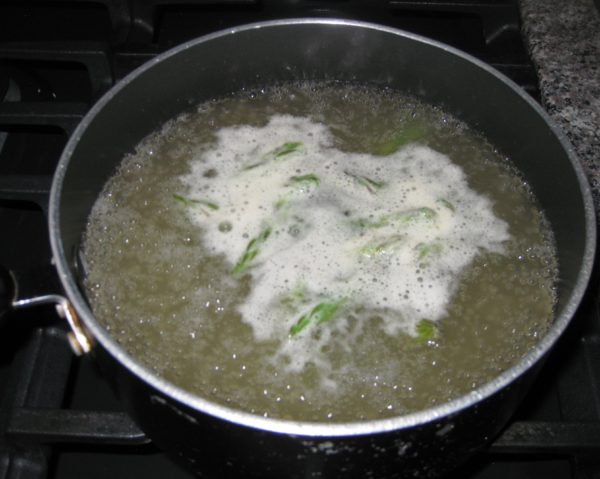
- Using a spider or large slotted spoon, remove the tips from the boiling broth and put them into a bowl of ice water to stop further cooking.
- Cook the cut asparagus spears in the chicken broth for 4-6 minutes. Like the tips, they should be toothy but not crunchy.
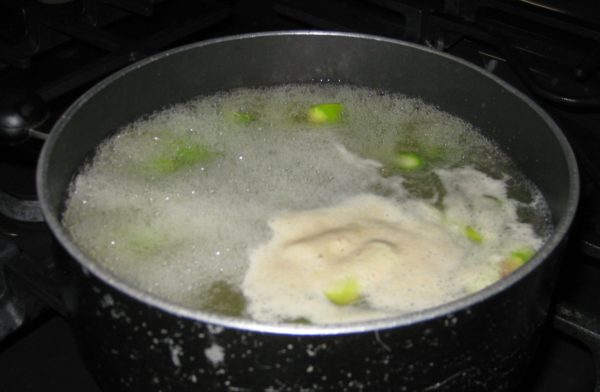
- Add the partially cooked cut spears to the ice water with the tips.
- Reduce the heat so the broth remains at a simmer.
- Heat a two or three quart heavy-bottomed saucepan over medium high heat. Add the olive oil.
- When the oil is hot, add the finely chopped shallot (or onion and garlic if you are using that instead).

- Sauté, stirring frequently until the shallot softens and turns translucent. Do not brown the shallot. You may need to reduce the heat.

- When the shallot is soft, return the heat to medium high and add the rice.

- Continue cooking, stirring frequently, until the rice starts to smell toasty. Do not brown the rice.

- The outer portion of the rice grains will get translucent while the inside will stay opaque white.
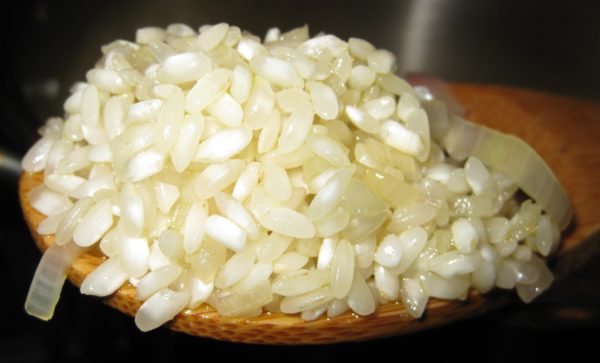
- Add the wine. Stir frequently, but not constantly, until the wine has totally evaporated. You will begin to see some starch leaching out of the rice. More and more of the starch will leach out as you cook the rice. This is what will make a creamy sauce.

- When the wine has evaporated, add a scant ½ cup of simmering broth. Stir thoroughly paying particular attention to loosening any spots where the starch seems to be sticking to the bottom of the pan. You don’t want to brown (or worse yet, burn) the starch.

- Stir frequently, but not constantly, until the broth has evaporated.

- If the broth is unsalted, as I recommend, you can add a teaspoon of salt to the rice as you begin to add broth. If the broth contains salt, I recommend not adding salt until the end.
- Keep repeating the process with a scant ½ cup of broth, cooking, stirring, and loosening any spots that are sticking until each addition of broth evaporates. The heat should stay as close as possible to medium high. The moderate boiling of the liquid will coax starch out of the rice to create the creaminess that is the hallmark of a good risotto.

- While the rice is cooking, drain the partially cooked asparagus.
- Begin tasting the rice after about 20 minutes of cooking. It will probably still be quite crunchy at the very core. Until you get the hang of it, I suggest testing a rice grain each time you add more broth so you develop a sense of how quickly the texture changes.
- When you think you’re only one or two additions of broth away from having perfectly al dente rice, add the partially cooked asparagus.

- Continue cooking, adding simmering broth or water as needed, until the rice is al dente.

- Remove the rice from the heat and stir in enough simmering broth or water to create a creamy “sauce.” The starch that you have coaxed out of the rice should absorb at least ½ cup of liquid, possibly more.

- Stir in the butter and Parmesan cheese. This will probably thicken the “sauce” so you will need to add a bit more simmering liquid to loosen it.
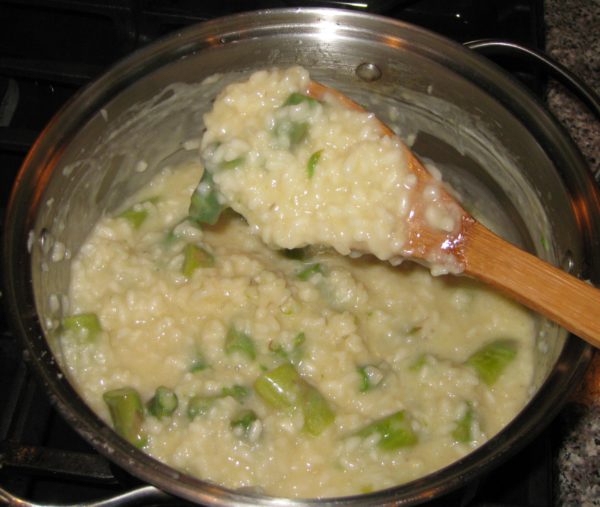
- Taste and add salt and freshly ground black pepper to taste.
- Serve immediately.

I think the standard method used to decide where to trim asparagus wastes too much. For a quick tutorial on how I prep asparagus, check out my Preparing Asparagus post.
It will likely take more than 4 cups of broth to cook the rice. If you don’t have more broth, just use plain water. I do that very frequently. Except for the initial addition of wine, all liquid added to the risotto should be simmering. As I’m getting near the end of the broth, I always put a couple of cups of water on to boil so that I have simmering water to add if needed.
Although the broth used for risotto should be flavorful, it should not be overly concentrated. The flavor of the asparagus should come through and not be muddled because the broth tastes assertively like chicken or herbs. Because you will be cooking down a fair amount of broth, it is best that it not be salted otherwise you run the risk of the risotto being too salty.
Copyright © 2017 by VillaSentieri.com. All rights reserved.

